She/her | 🇨🇵 | HP - HPHL - HPHM | My AO3 | pfp: @whatwouldvalerydo | Header: @tamayula-hl
Don't wanna be here? Send us removal request.
Text
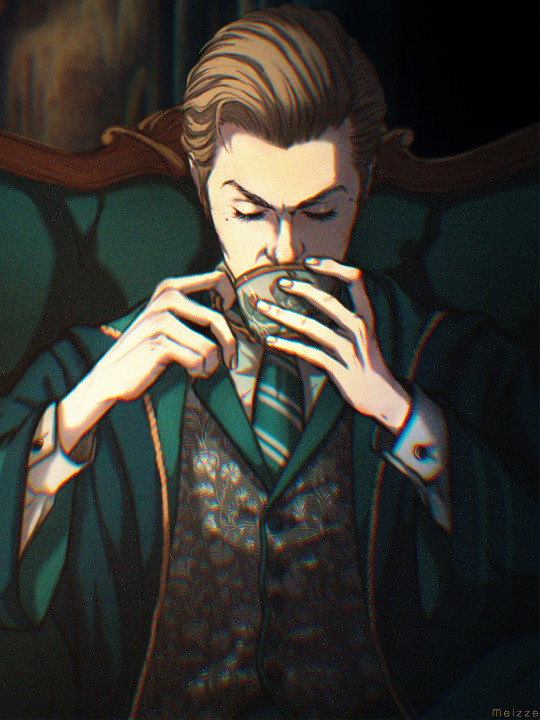
7th- YEAR OMINIS GAUNT (him wearing neatly groomed sideburns is canon... in my headcanon)
This is Ominis’ tea time ☕ Any attempt at conversation will be met with a withering glare and silent judgment.
64 notes
·
View notes
Text
Ominis after Sebastian's expulsion from Hogwarts

A thousand thanks to @raraaf6 💖✨️ for once again accepting me as a client and for illustrating this scene from the second chapter of Lullaby for Cursed Seeds:
The headmaster takes the time to twirl it between his fingers, as if savouring this moment.
“And your wand will be broken forthwith,” he declares, ensuring the complete attention of its owner and every witness.
Then, with a gesture that Ominis can only guess is theatrical, he breaks the wand in two. The sinister crack echoes in the silence, like lightning ripping through a cloudless night.
Fragments of aspen fall to the floor, and someone gasps beside Ominis. It could be Evelyne, but he’s not sure. In any case, he doesn’t care.
A maelstrom of emotions clutches his throat and squeezes his skull. As for his heart, Ominis has rarely felt such pain. It beats with difficulty in his chest, suffocated by guilt. An unhealthy, morbid shame.
Ominis knows he’ll have to find a way to live with the consequences of his actions... But for now, he contents himself with gathering the remains of the broken wand, wondering what he might have done differently to avoid losing Sebastian.
#hogwarts legacy#ominis gaunt#sebastian sallow#hogwarts legacy fanart#ominis gaunt fanart#evelyne lavandin#evinis💚#ominis gaunt fanfic#ominis x mc#ominis gaunt x oc
15 notes
·
View notes
Text
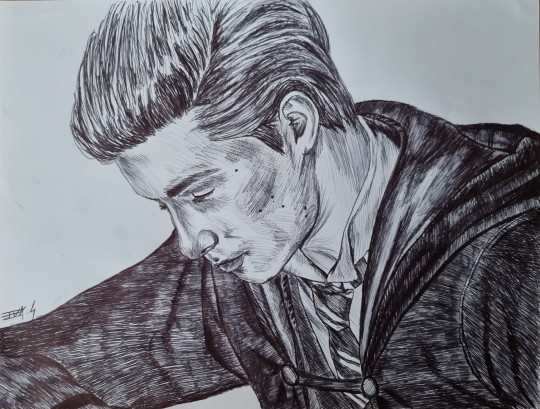
23 notes
·
View notes
Text
What an interesting post. Thank you for sharing!🙏🩵
Without delving into exact figures, I’ve always felt that the wizarding population must in fact be larger than the size of Hogwarts would suggest. The complexity of other magical institutions, such as the Ministry, St Mungo’s, or Diagon Alley, as you mentione😉, doesn’t quite align with such a small community.
This has led me to think that Hogwarts isn’t necessarily the preferred route of education for every family. Some children are probably taught within their own households, especially in artisan lineages like the Ollivanders, where expertise is passed down from one generation to the next. The same could be true of the MacFusty clan, who manage the Hebridean Black dragons. Certain pure-blood families might also prefer not to mix with wizards they consider beneath them. And ostracised communities, such as vampires or werewolves, are likely forced to find other ways to educate their young as well.
An Analysis of the The UK Wizarding World Population
How Many Wizards Are There, Really?
Okay, so this started because I just needed to get this figured out. The numbers in the Wizarding World have always felt a little… off. So I decided to sit down and really work it out using the books, real-world stats, and some basic demographic logic to see what kind of population could actually support the magical society we see in the series.
I've done my best to be as thorough as possible, but of course, there are probably things I missed, details I overlooked, or assumptions that could be challenged. This isn’t meant to be a definitive answer, just a grounded, numbers-based attempt to reconcile the world we see in the books with what it would actually take to make that world function. Think of it less like a census and more like a curiosity-driven thought experiment. One that, once you start… you kind of can’t stop thinking about.
Okay, so how do we start? Well, we’re told several useful things in canon:
There are 7 years at Hogwarts.
There are 4 houses.
Each student is sorted into a house in their first year.
Using the books as a reference, we can start to gather some information to help us get a baseline for the population. Throughout all the novels, Harry names the following Gryffindors in his year:
Ron Weasley
Neville Longbottom
Dean Thomas
Seamus Finnigan
Hermione Granger
Parvati Patil
Lavender Brown
If there had been anyone else in his year, I am making the assumption that they would have been mentioned. This means there were a total of 8 Gryffindors that year. However, in several scenes throughout the books, we do see joint house classes and various comments are made that allow us to make assumptions about other houses.
For example, in first year flying lessons, it is said that when Harry arrived, there were "twenty broomsticks lying in neat lines on the ground". Thus, there were 12 Slytherins with the 8 Gryffindors. This would give an average of 10 students per house per year during Harry's time. In total, that's approximately 40 students per year, meaning a total of 280 students in the school across the 7 years. This also implies that there are only approximately 40 magical children are born per year in the UK.
Next we can apply a simplified demographic model used to estimate how many people are alive in a population at any given time if the population is stable:
Population size = Annual birth rate × Average lifespan
We know wizards live longer than muggles, so lets assume a average life span of 120.
4,800 = 40 × 120
Now, if you're like me, you're looking at this total thinking "that is a tiny number of wizarding folk". So, I'd like to point out a few factors that we should consider:
Birth rates during war
Society and the economy
1. War-time Birth Rates
First, let's start with war-time birth rates. Looking at a real-world example, "by 1914, the birthrate was around 2.88 children per woman, but by 1918 this had collapsed by almost 50%".
Students who arrived at Hogwarts in 1991 (Harry's year) must have been conceived during the year of 1979. Importantly, the First Wizarding War lasted from 1970 to 1981, and thus we can conclude that wizarding births would presumably have also significantly decreased during this period of time.
So, assuming twice the number of magical births per year, that would give us:
9,600 = 80 × 120
Double our original value, but once you step back and consider the infrastructure, complexity, and institutions that we’re shown in the books, it still seems tiny.
With this in mind, I will shift my focus from population biology to sociological and economic modeling.
What do we actually see in wizarding society? Even filtered through the narrow, teen-focused lens of Harry’s POV, the wizarding world contains infrastructure, complexity, and economic specialization that a population of just 4,000 could never realistically support.
2. Society and the Economy
Hogwarts
A fully staffed residential boarding school with:
Multiple subject specialists
Caretakers, groundskeepers, nurses, kitchen staff
Expensive magical architecture, security, and upkeep
Referred to as the only wizarding school in the UK
Revered internationally (seen as elite)
If we assume the oft-cited (if narratively inconsistent) “1,000 students at Hogwarts” figure from J.K. Rowling’s 2000 Scholastic chat is correct at peak capacity, then: 1,000 students ÷ 7 years = ~140 students per year Now apply the lifespan-based model: 14,000 = 140 × 100
Even this is conservative in my opinion, but it's better than our original figure! So let's continue...
2. St. Mungo’s Hospital
A multi-ward medical institution
Staffed with Healers, assistants, and administration
Serves everything from spell damage to long-term care
Using a conservative UK hospital ratio, 1 bed hospital bed per 100 people gives us 30,000 magical people served.
3. Ministry of Magic
The Ministry includes:
At least 7 named departments
Subdivisions like Aurors
Full-time court officials (Wizengamot), clerks, obliviators, diplomats, and more
In the real-world, the UK government employs (500,000 / 67,000,000) × 100 = ~0.7% of the population.
Even if the Ministry is bloated (as governments often are) and employs 1,000 people, then 1,000 / 0.007 = ~140,000 magical citizens.
Now, if these figures aren't enough for your consideration, I have a few more...
4. Azkaban
Azkaban is a high-security, long-term prison used to hold:
Violent criminals
Political prisoners
Entire cells full of Death Eaters
In real life, most countries don’t operate entire island prisons unless they have substantial incarceration numbers. For comparison, Alcatraz housed ~250–300 inmates and still required a significant support system.
Even if only 1% of magical adults ever serve prison time, that implies a population large enough to make Azkaban worth running, once again suggesting a base of at least tens of thousands, not a few thousand.
5. Magical Economy
In the novels, we see:
Diagon Alley and Hogsmeade packed with specialty shops (wandmakers, potion ingredients, magical pets, etc.)
Flourish & Blotts hosts author signings
The Daily Prophet is a fully operational national newspaper
Magical public transportation (Knight Bus, Floo Network)
Owl delivery services
An economy with this degree of specialization requires thousands of consumers and enough income diversity to support luxury, artisan, and utility goods.
And it's not just about who's buying the goods, but who is making, sourcing, or importing them. For example, consider Madam Malkin’s Robes. Even if we assume that much of the tailoring and enchanting is done in-house, the materials must come from somewhere. Who harvests the acromantula silk? Who spins it? Who processes the dragonhide for protective gloves or boots? Even something as seemingly simple as standard Hogwarts robes likely requires inputs from weavers, dyers, and delivery couriers. And that's just one shop. Now multiply that by the dozens of boutiques in Diagon Alley, the merchants in Hogsmeade, and the countless magical goods required to support the average household, hospital, school, and Ministry office.
6. Decentralized Communities and Regional Infrastructure
So far, this entire model assumes that magical Britain is highly centralized, with everything flowing through Diagon Alley and London, but that assumption doesn’t hold up to scrutiny and and recent additions to the canon support a more distributed magical landscape. In Hogwarts Legacy, we’re introduced to several small magical hamlets throughout the Scottish Highlands, indicating that rural magical communities do exist and have their own localized economies. This aligns more with how real-world populations are distributed.
It also raises a practical question: are magical families in Wales or Scotland or Ireland really expected to travel to London just to purchase school supplies when they have their own major cities? The idea that there’s a single alleyway to serve the entire magical population of the British Isles is logistically absurd. Even if Diagon Alley is the largest and most famous commercial center, it cannot be the only one. There must be regional tailors, wandmakers, apothecaries, and general suppliers, especially for families that aren’t wealthy or well-connected.
This suggests the existence of dozens of small to mid-sized magical communities, each requiring their own economic base, service providers, and integration into the broader magical world. And that, in turn, implies a significantly larger national population to justify and sustain this decentralized infrastructure.
All in all, this implies a significant consumer base. However, an important consideration is that unlike Muggles, wizards can:
Automate household chores (e.g., cleaning, cooking)
Teleport instantly (no need for extensive infrastructure)
Heal injuries and illnesses faster
Use magic to farm, manufacture, and repair with fewer people
Reduce logistics and transportation burdens
Thus, while a Muggle society might need 250,000–300,000 people to support, let's assume a magical society could feasibly do it with half the number of people.
3. A Final Number
Taking the narrative, demographic, economic, and institutional factors together, a reasonable, grounded estimate for the population of the British and Irish wizarding world would fall between 100,000 and 150,000 witches and wizards.
While wizards benefit from magical efficiencies that reduce their reliance on large labor forces (e.g., using magic for transportation, food preparation, and household tasks), the complexity of their institutions still demands a much larger population than the original 4,000 estimate suggested by Hogwarts class sizes alone. Even assuming magical productivity multiplies output, the sheer diversity and durability of magical Britain’s institutions point to a minimum six-figure population.
At 100,000 individuals out of roughly 67 million total in the UK, that makes magical folk ~0.15% or roughly 1 in every 667. In a city the size of Manchester with 570,000 people, about 850 would be magical.
Now, in 2022, the UK had ~5.3 million people aged 11–17 out of ~67 million, giving us ~7.9%. If the total magical population is estimated at 100,000, then the number of Hogwarts aged children would be 100,000 × 0.079 = 7,900.
At this point, however, we begin to see the unavoidable tension between narrative design and realistic population modeling, as we certainly never see anything close to 8,000 students at Hogwarts in canon material. Class sizes are small. Dormitories are intimate. Teachers give individualized attention. There are no massive dining queues. J.K. Rowling herself has contradicted the books in interviews. So what do we do with this contradiction?
8. A Top-Heavy Age Pyramid
We know that Wizards live significantly longer than Muggles. Dumbledore was over 115 at his death. If wizards live ~120 years on average, then this would impact the age structure of the wizarding world. It’s possible the population is top-heavy, with a disproportionately large number of elderly witches and wizards and fewer magical children born each year.
This structure isn’t unprecedented. In the real world, countries like Japan face a similar demographic challenge. As of 2022, 29% of Japan’s population was aged 65 or older, and the national fertility rate was just 1.26 children per woman, far below the replacement level of 2.1.
Applying the same logic to the wizarding world, it’s reasonable to assume that even with a total population of around 100,000 witches and wizards, only a small fraction, perhaps just 3%, would fall within the 11 to 17 age range. That would yield approximately 3,000 school-aged children, translating to roughly 400 students per year at Hogwarts, or about 100 students per house per year.
While numbers like 400 students per year or 3,000 total may sound large compared to what we see in the books, it's important to remember we're talking about a massive, enchanted castle. Hogwarts is likely capable of adjusting itself to fit the needs of its population. We’ve seen magical spaces, like tents and suitcases, that are significantly larger on the inside than they appear from the outside, and it stands to reason that Hogwarts’ dormitories, classrooms, and common rooms function in much the same way. So even if the student body expands or contracts from year to year, the school is almost certainly built and enchanted to scale accordingly.
9. Final Thoughts
So, what does all of this actually mean?
Well, it means the Wizarding World is bigger than we’re led to believe. Not just in terms of geography or magic, but in terms of sheer numbers. If we take the books at face value, we get tiny class sizes and a population that feels more like a close-knit village. But when you start looking at the complexity of the institutions, the economy, the Ministry, the infrastructure... it just doesn’t add up unless the population is much, much larger.
That doesn’t mean the books are wrong, they just show us one very specific lens: the extraordinary life of a teenager who isn’t particularly concerned with census figures or economic modeling. But if you zoom out and think about what it would really take to make that world function? In my opinion, you end up somewhere around 100,000 to 150,000 witches and wizards, maybe more.
Anyway, I had to work it out. And now maybe you don’t have to.
Or maybe you will. Because once you start thinking about this stuff… you kind of can’t stop.
#hogwarts school of witchcraft and wizardry#hogwarts legacy#hogwarts legacy fandom#fanfiction#hogwarts houses#harry potter#fan theory
29 notes
·
View notes
Text
Daddy’s Aftercare🍳
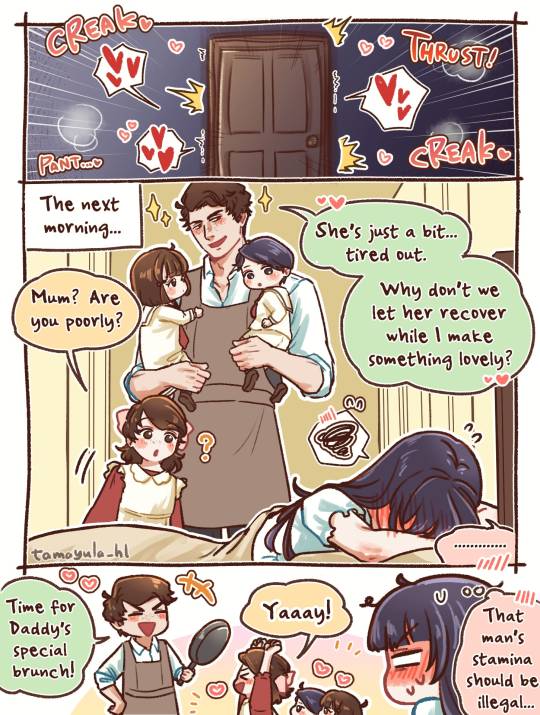
I do remember Sebastian getting out of breath just walking to Hogsmeade—but still, I simply had to draw him as an insatiable, doting dad.
#💖💖💖#hogwarts legacy#hogwarts legacy fanart#sebastian sallow#sebastian sallow fanart#sebastian sallow x oc#sebastian sallow x mc#sakurako nogi
437 notes
·
View notes
Text
This was made in July of last year.
I made Sebastian Sallow's wand! (and a wooden and paper box.)
The wand used was cypress, 10-1/4 inches (26 cm) long. I used cypress because it's easy to make, but it's not an official specification.
I'm curious about Sebastian's wand components. It doesn't seem to have been officially announced.
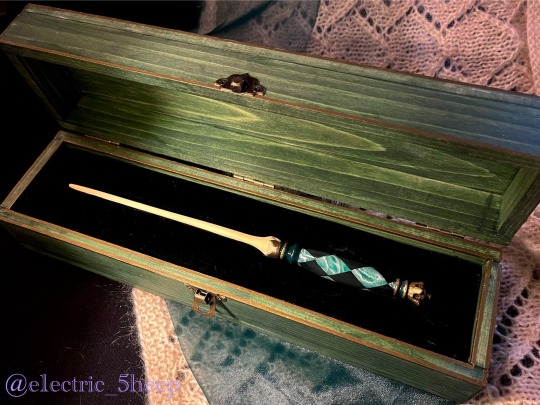
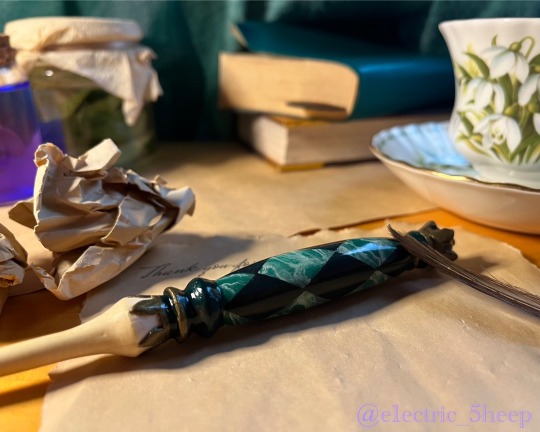
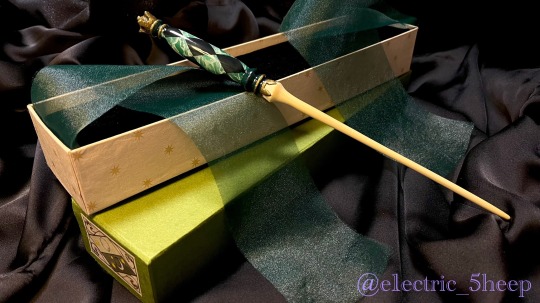
These two pictures are screenshots for reference.
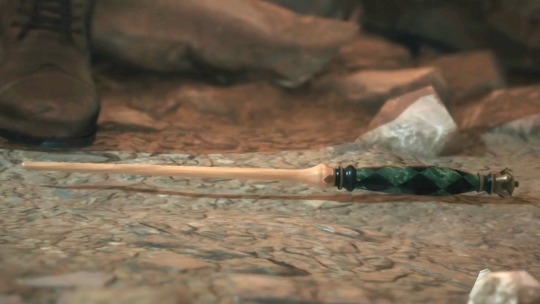

These are photos of the work in progress.




29 notes
·
View notes
Text
✨Ominis Gaunt – Portrait Kintsugi✨
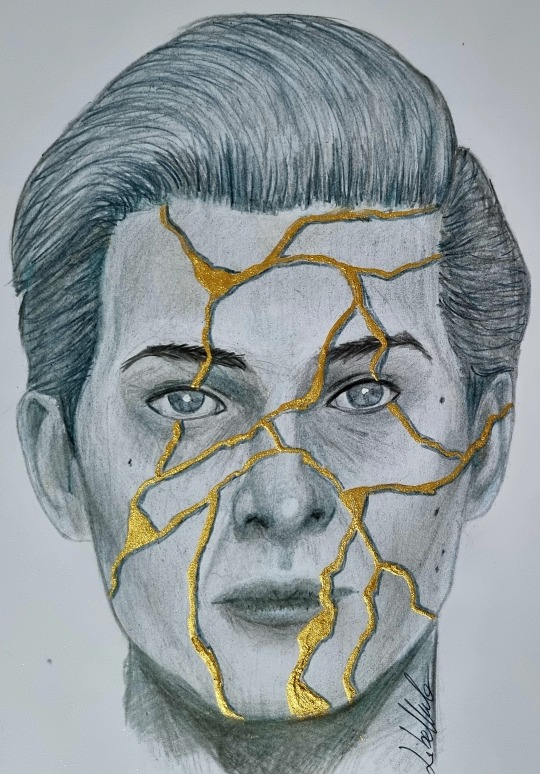
I’m not an artist, but I can manage a little drawing with a reference, and after finding some gold ink among my things, I felt like trying to depict Ominis with a kintsugi effect. So I spent about 6 hours working on this portrait ( Medium: coloured pencils & gold ink) 😭
Even though there are imperfections due to my lack of experience, I really like the overall result and what it evokes. 😊
#hogwarts legacy#ominis gaunt#ominis gaunt fanart#drawing#hogwarts legacy art#hogwarts legacy fanart#ominis#artwork
114 notes
·
View notes
Text
🌟SYAO'S COMMISSIONS OPEN🌟


Heyyyy friends !!!!!!
I’m opening up 3 commission slots, first come first served. Each commission will take about 2 weeks to a month, depending on its complexity.
Just need to send me a private message with what kind of commission you'd like, and provide as detailed descriptions and references as possible. If you can draw the idea out, even stickmen figures, that would be great to visualize the idea!
Payment:
I only receive PayPal payments.
I expect 100% payment in advance after the clean sketch is approved. Then I'll start coloring.
No refunds once the painting has started
Please don't send me any payment until I request you to do so.
Other notes:
I can only deliver scanned version (hope you guys don't mind).
I use both watercolor and gouache so you can choose which one you like more.
You can revise the sketches two times. Please do not change what has been approved after I move to the next step! Once I start coloring I cannot change the sketch :(
I DO draw fanarts, not-so-complicated monster/mech/animals (which I'm not very confident but I'll try my best 🥹)
I DONT draw NSFW and gore. I will reject the order if I find something I cannot draw!
If you have any questions, please feel free to ask me 😙 I'll try to be as detailed as possible ~~~
Also, this isn’t HL specific so you an request to draw other fandoms ~
Below are other DnD comission I've done. Thanks for your support ❤ ❤ ❤ ❤
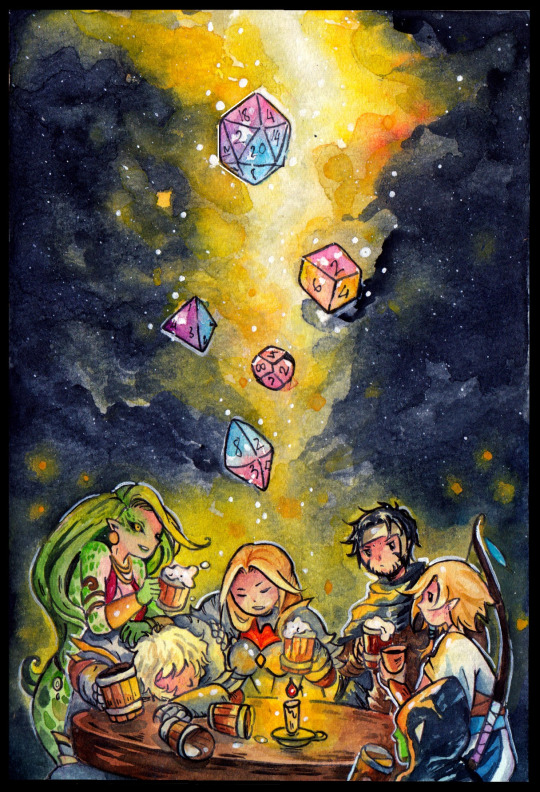

35 notes
·
View notes
Text
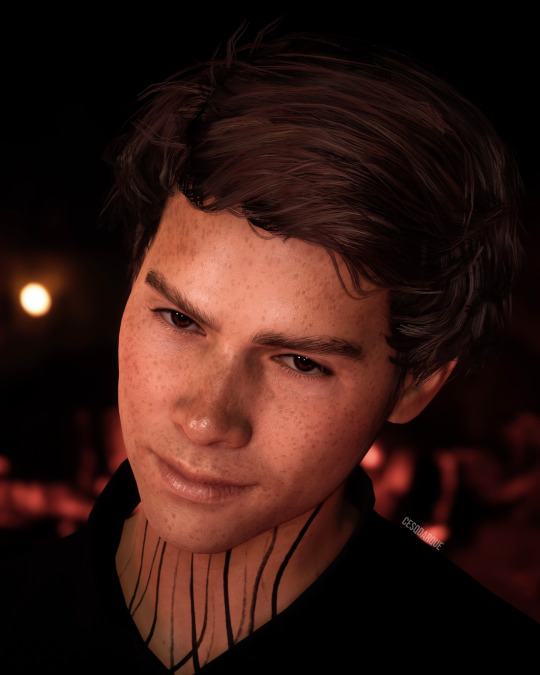
#hogwarts legacy#sebastian sallow#hogwarts legacy screenshots#sebastian sallow screenshots#dark sebastian sallow
55 notes
·
View notes
Text
Full Dad Mode👨
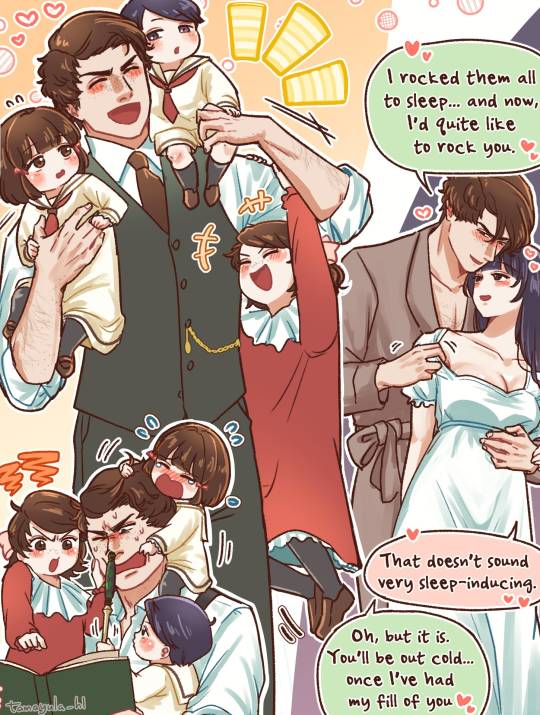
I want DadSebastian to be a powerful man who gives his all to parenting, housework, work… and a little fun at night too.
#💖💖💖#hogwarts legacy#hogwarts legacy fanart#sebastian sallow#sebastian sallow fanart#sebastian sallow x mc#sebastian sallow x oc#sakurako nogi
512 notes
·
View notes
Text
What do you think of this Hogwarts Legacy character?
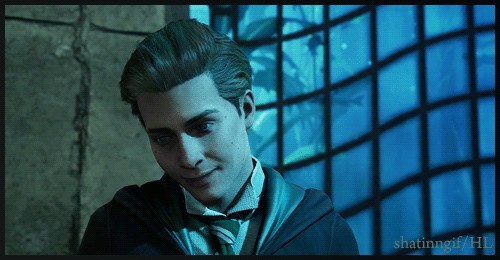
Credits to GIF owner!
18 notes
·
View notes
Text
I’ve always shipped Matilda Weasley and Chiyo Kogawa, but I had never taken the time to write anything about them. My OTP has been monopolising all my time and inspiration 😅… So I’ve finally decided to gather my HCs.
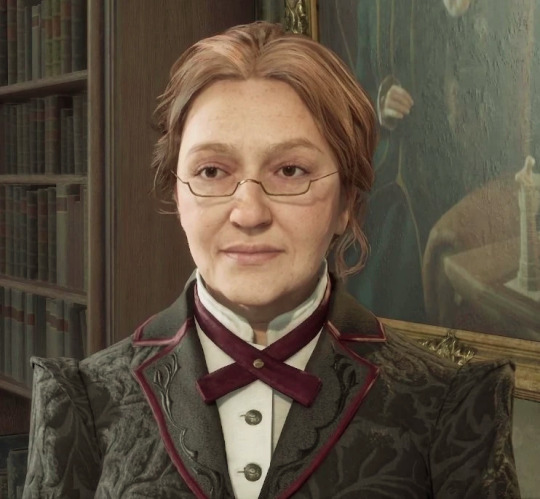
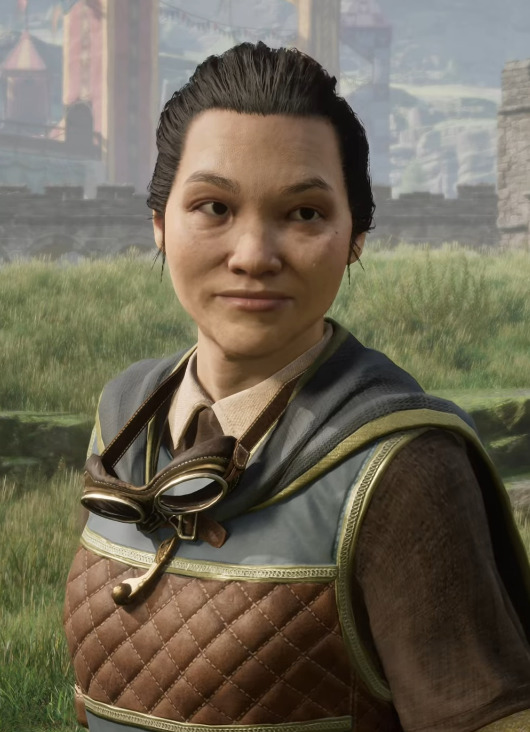
These photos are from Pinterest.
🌸 How They Met (in Japan)
At the time, Matilda Weasley was a young, daring curse-breaker, sent to the port of Yokohama to lift the complex enchantments on a ship suspected of concealing a dangerous artefact stolen from the British Ministry of Magic.
Chiyo Kogawa, meanwhile, was working for the Japanese Ministry of Magic, having given up a promising career as a Quidditch player after the dishonourable cheating of her friend during selection trials. She was tasked with supervising and guiding the foreign curse-breaker.
Chiyo was initially wary of the bold, red-haired witch, yet she soon found herself fascinated in spite of herself by Matilda’s keen mind and unconventional methods of solving ancient riddles. ✨
As for Matilda, she felt an immediate respect for Chiyo’s discipline, sensing that her sense of duty was not merely the product of her upbringing, but was driven by a desire for reparation, a need to reclaim her honour.
Between them, the chemistry was instantaneous. They spent a week suspended in time, immersed in investigations, impromptu duels, baths in the hot springs , and stolen nights in inns.
But once the artefact was recovered, duty caught up with them. Matilda was ordered to return to Europe. Chiyo could not abandon her responsibilities. They parted with heavy hearts, each carrying the memory of their shared interlude. 💔
🍂 The Passing Years
Matilda continued her career in England. She married a man who left her a few years later, claiming he could not stay with a woman who was barren. She was scarcely affected by the separation, which she welcomed as a liberation ✨, and took back her maiden name before becoming a professor at Hogwarts. Yet she often found herself thinking of Chiyo, a sad smile on her lips.
When it came time to recruit a new flying instructor, Matilda spontaneously suggested Chiyo Kogawa’s name. Officially, she recommended her for her unparalleled skills. In truth, she would not admit to anyone – not even to herself! – that she was hoping to see her again.
For her part, Chiyo claimed she accepted the post because it allowed her to reconnect with Quidditch, her great passion. But deep down, it was not the sport that brought her back to England. It was Matilda. 💖
🍁 Their Dynamic at Hogwarts
Their reunion was tinged with hesitation. The years had passed, they had changed, and at first they merely watched each other from a distance. Matilda was more composed than she had once been, though an intense fire still burned in her gaze 🔥. Chiyo had grown warmer, less rigid.In the beginning, they maintained a strictly professional distance.
Chiyo took to flying alone in the evenings, high above the Black Lake, hoping Matilda might come to join her. Matilda preferred to admire her in secret from her window. She would tell herself that it was the most beautiful thing she had ever seen in the sky – and she had once witnessed the courtship display of an Antipodean Opaleye 🐉.
At times, she also found excuses to walk out onto the training grounds, ostensibly to check on student safety or to ensure that the new professor was not suffering from homesickness and was settling in well.
When they finally found themselves alone together, the closeness that had once bound them resurfaced as though it had never left. ✨ But this time, they chose to take things slowly. They had learnt that lasting love must be nurtured through constancy and patience.
They would sometimes meet late at night to share tea 🍵 and mochis Chiyo had specially sent over from Japan, or to fall asleep beside each other.
They were happy and felt no urgency to define what they were to one another. Nor did they feel any need to speak of it to anyone else.
Perhaps that is what true love is: simply rejoicing in the fact of existing together. 🌸
#hogwarts legacy#matilda weasley#chiyo kogawa#Matilda Weasley x Chiyo Kogawa#hogwarts legacy headcanons#hogwarts professors
19 notes
·
View notes
Text
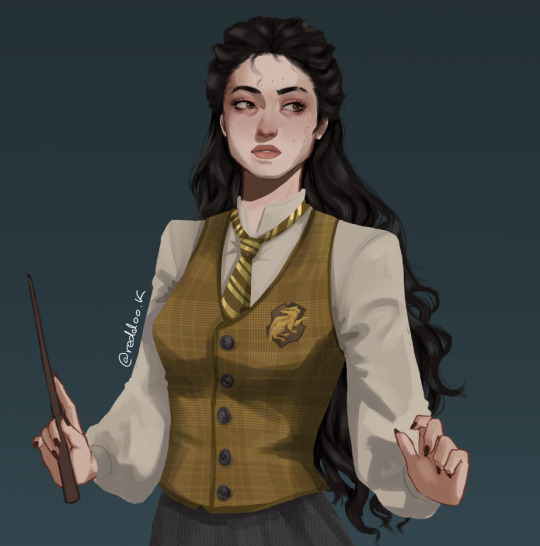

been playing Hogwarts legacy a lot since summer started so here's my precious MC nyehehehe
I'm thinking on maybe writing a fanfic because the amount of lore I have built on this girl is crazy but I'm not too confident on my writing skills yet UnU
193 notes
·
View notes
Text


In the shadow of the study (Part 3) Part 1 | Part 2
HELLOOO I'M BACK!!!!!
I've finally took the Japanese Proficiency Exam last week and now I'm finally free to draw again!!! ���🥹 Ohh I missed Tumblr and I missed you guys ~~~
I was supposed to upload part 2 first buttttttttttt I missed working with watercolor and it is just halfway done so it will be posted later hehe ~~
Also, I'm thinking of opening commissions (well, if..anyone is interested?)
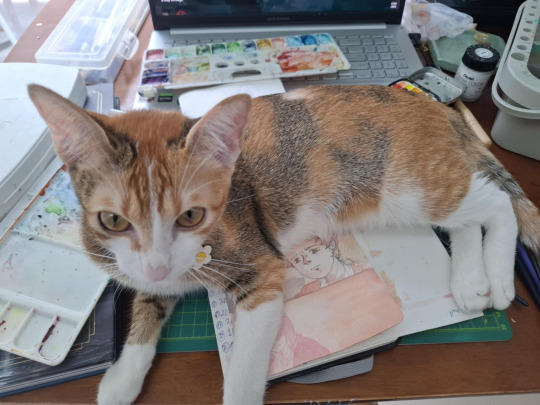
No one asked but here's a pic of my cat invading my drawing space 🤣🤣
#😭😭😭#hogwarts legacy#hogwarts legacy mc#watercolor#sebastian sallow#violette laurant#hogwarts legacy oc#sebastian sallow x mc#ominis gaunt#crucio
125 notes
·
View notes
Text
As a fic writer, i need every reader to know that:
I don’t care if your comment is coherent. I know what you mean and i love you
I don’t care if you ramble. I read every word and i love you
I don’t care if you leave a comment on a fic from four years ago or leave comments/kudos on like ten of my fics in one go. This isn’t IG, pls stalk my AO3. I love you
I don’t care if you mention the same thing in your comment that four other people have already mentioned. It’s actually really useful to know what resonated with people and I love everyone who takes the time to tell me they liked a particular turn of phrase
I don’t mind if your comment is super long or just a couple of sentences, i love them all
I love you
93K notes
·
View notes
Text
I've been to Sharp's room (again), and something caught my attention. Small scratches can be found on the floor in regular intervals. I marked them because they can be easily missed:


Those scratches can be found both in his living room and in his bedroom, however not in the hallway in front of his room, nor in his secret drawing room.

So, I've been wondering if these scratches might be from his cane. What speaks in favour of this are the regular intervals between the marks, and also that they can't be found in his drawing room because that's the way he has to enter:

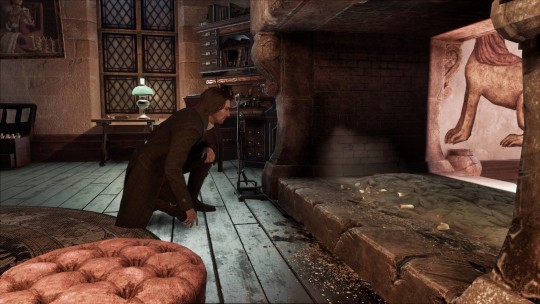
He probably only uses his cane when there's no other way, as we all know, he's a very proud man who won't admit any weakness, or rely on any help, which leads me to another conclusion/question, related to the location of his room.
The faculty tower can be reached via the floo network. However, his room is on the second floor and can only be accessed by taking the stairs. He obviously started teaching at Hogwarts shortly after his injury, which probably was way worse back then. Why not give him a room on the ground floor? In a world of magic, it would have been easy to swap rooms with another teacher.
My thesis is that he probably even asked for this particular room because it's the only one with no next-door neighbours, and no one living beneath, as seen in this picture:

My idea is that he knew he would have to use his cane or even his wheelchair, and he still does. That's why they can still be found in his room. However, he doesn't want anybody to know. If he uses his cane often enough to leave marks on the floor, neighbours next door or beneath would probably hear it, so he made sure to get a room without that risk, even if it means worse accessibility.


64 notes
·
View notes




